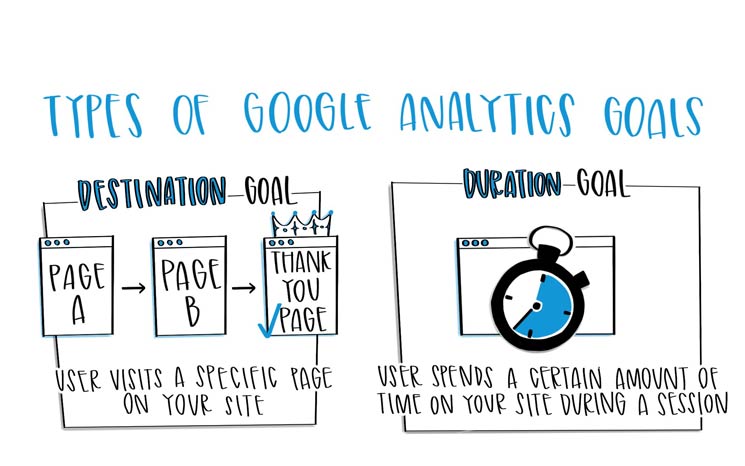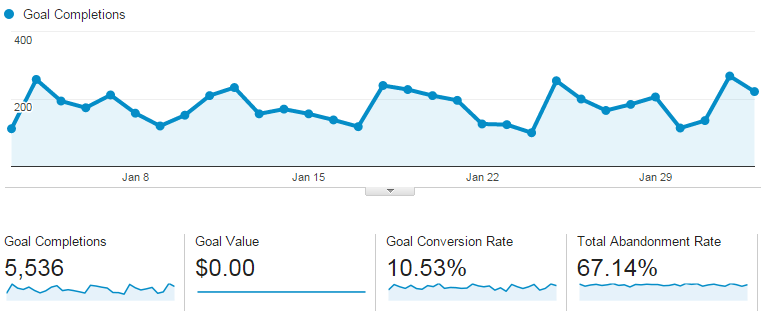Discovering What Data Is Google Analytics Goals Unable to Track
Discovering What Data Is Google Analytics Goals Unable to Track
Blog Article
Discover the Limitations of Google Analytics Goals: Introducing the Information Types That Remain Untrackable
As organizations progressively count on data-driven decision-making, comprehending the restrictions of tools like Google Analytics comes to be paramount. While Google Analytics Goals offer beneficial insights into individual interactions, there exist data kinds that elude tracking, positioning obstacles to a thorough understanding of individual behavior.
Insufficient Customer Journey Tracking
Incomplete customer journey monitoring within Google Analytics can prevent the ability to precisely assess customer habits. When the individual journey is not completely tracked, there are gaps in the data that prevent a thorough understanding of just how customers engage with an internet site. This lack of understanding can cause missed chances for optimization and improvements to the user experience.
One usual problem with incomplete individual journey monitoring is the inability to see the full path that users take in the past finishing an objective or leaving the site. Without this info, it is challenging to determine where individuals might be encountering obstacles or friction factors that prevent them from converting. In addition, incomplete monitoring can obscure the effect of certain advertising efforts or internet site modifications on user habits.
To address this constraint, it is crucial to establish correct monitoring mechanisms within Google Analytics to capture the whole user trip. This may entail establishing up occasion monitoring, goal funnels, or using tools like Google Tag Manager to ensure that no important interactions go unrecorded. By acquiring a thorough sight of the user journey, internet site owners can make more enlightened decisions to enhance user interaction and drive conversions.
Attribution Obstacles
Browsing via attribution obstacles in Google Analytics needs a comprehensive understanding of just how various touchpoints contribute to the general conversion procedure. Acknowledgment obstacles develop from the complexity of modern-day customer trips, where customers engage with multiple channels prior to transforming. Google Analytics gives numerous attribution versions like first touch, last touch, and linear, each offering a different viewpoint on just how credit score is designated to touchpoints along the conversion path. Nonetheless, these versions might not always precisely show the real impact of each touchpoint on the conversion.
One usual acknowledgment difficulty is the problem in associating conversions to the proper resource, specifically in instances where users communicate with multiple channels prior to transforming. Furthermore, cross-device monitoring positions another acknowledgment challenge, as users typically switch over in between gadgets throughout their journey, making it testing to track their interactions flawlessly.
Offline Conversions
Offered the difficulties connected with attributing conversions accurately in online networks, the measurement of offline conversions presents a substantial possibility for marketers looking for a more thorough understanding of their consumers' journey. Offline conversions describe activities that consumers take in the real world, such as making purchases in brick-and-mortar shops or over the phone, participating in occasions, or involving with printed products - what data is google analytics goals unable to track. These conversions are critical for services that run both online and offline, as they supply important insights right into the efficiency of marketing campaigns throughout various touchpoints
Tracking offline conversions generally presented a substantial difficulty for marketing professionals, as it was testing to connect these actions back to specific on-line interactions properly. Nonetheless, with improvements in technology, such as the integration of CRM systems, special identifiers, and discount coupon codes, organizations can now connect the gap in between online and offline information to gain a more alternative view of consumer click over here now behavior. By successfully measuring offline conversions, marketing experts can enhance their methods, assign sources much more efficiently, and ultimately enhance the total customer experience.
Cross-Device Tracking
Cross-device monitoring plays an essential function in comprehending the interconnected nature of customers' digital interactions across multiple devices. In today's omnichannel globe, where users perfectly switch over in between smart devices, desktops, and tablets, tracking their habits throughout these devices is important for marketing professionals to gain a comprehensive view of their client trip.

Moreover, privacy concerns and policies such as GDPR and CCPA have additionally challenging cross-device monitoring. With individuals requiring more control over their information and boosted limitations on tracking innovations, marketing professionals have to discover privacy-compliant and cutting-edge ways to attach user interactions across tools.
Dynamic Material Engagement
Recognizing individual interaction with dynamic content is critical in maximizing digital advertising techniques for boosted audience interaction. Dynamic content describes web site components that change based on individual actions, preferences, or other variables, using a tailored experience. Nevertheless, tracking customer interactions with vibrant web content poses difficulties for typical analytics tools like Google Analytics.
While Google Analytics can track fundamental interactions like clicks and web page views, it might battle to capture more nuanced interactions within vibrant content. what data is google analytics goals unable to track. Metrics such as time spent on specific vibrant components, hover actions, or communications within pop-ups are often not quickly quantifiable making use of common tracking methods. This constraint prevents online marketers' capability to completely realize exactly how customers are involving with dynamic content and tailor their methods accordingly

Final Thought
To conclude, Google Analytics goals have limitations in tracking incomplete individual trips, associating conversions properly, capturing offline conversions, tracking cross-device communications, and gauging vibrant web content read what he said engagement. These restrictions highlight the significance of checking out additional tracking techniques and devices to gain a more detailed understanding of individual habits and conversions past what Google Analytics can supply.
While Google Analytics Goals offer important insights into individual communications, there exist information kinds that avoid tracking, positioning obstacles to an extensive understanding of customer habits.Incomplete customer journey tracking within Google Analytics can prevent the ability to accurately analyze individual behavior. When the individual journey is not fully tracked, there are spaces in the information that stop a comprehensive understanding of exactly how individuals engage with an internet site.One typical concern with incomplete customer journey tracking is the lack of ability to see the full course that users take in the past completing a goal or leaving the website. By gaining an extensive sight of the user journey, web site proprietors can make even more enlightened decisions to enhance individual involvement and drive conversions.
Report this page